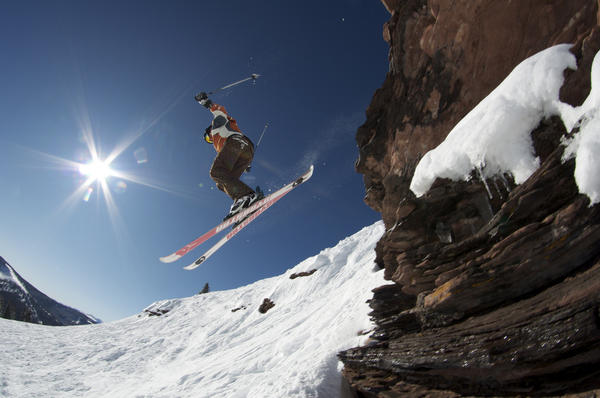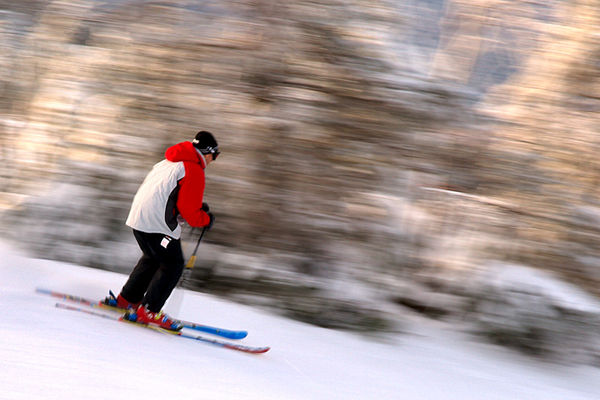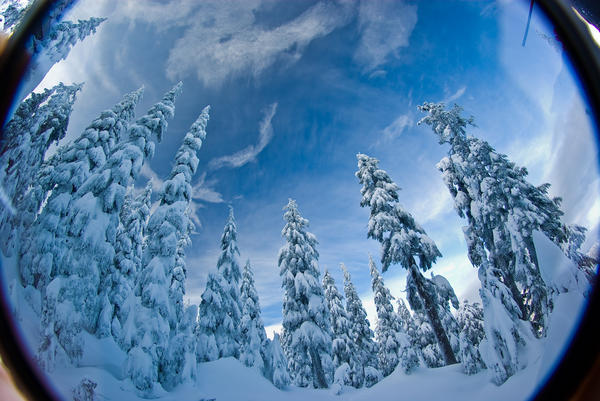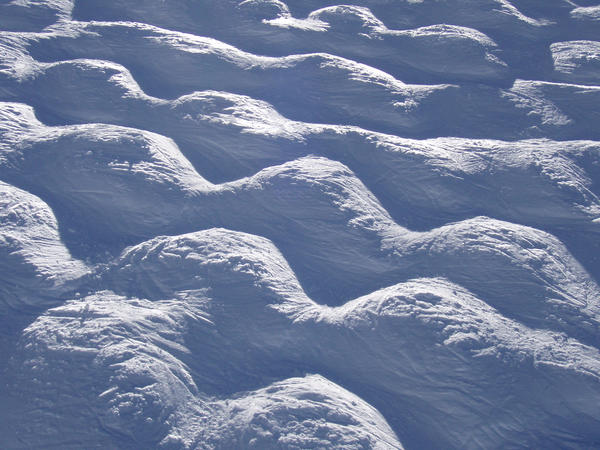The term ‘freeskiing’ was first used during the early 1990s to describe the activity of skiing down a mountain slope that is not groomed. This means that there will be various obstacles on the mountain, such as trees and rocks. The term is also used to describe other forms of extreme skiing, such as performing tricks with the use of jumps, boxes and rails. The experience of freeskiing is very different to skiing on groomed slopes, so you will need to adapt your technique.
Steering
When skiing on a groomed slope, it will be fairly easy to turn and there will be little resistance. However, when skiing on ungroomed terrain there will be resistance all around the skis.
Most people who learn to ski are taught to steer using their feet, but on an ungroomed slope you will need to use your whole leg. It is a good idea to do exercises to build up the muscles that you will need to use. The ‘thigh steering’ exercise can be used for this. The exercise involves standing on one leg, lifting the other leg and rotating the thigh across the body.
Before going out onto ungroomed terrain, it is recommended that you practice your new technique on a groomed slope.
Skiing moguls
Moguls are mounds of snow that have been created as skiers make turns on the slope. They are also deliberately constructed on freestyle skiing slopes. Before skiing moguls, you will need to learn the technique.
When you are approaching a mogul, you will need to plant your downhill ski pole to the front, and then shift your weight on the outside ski while turning around the bump. After planting your ski pole, you will need to push your hand forward in order to pull your arm through. You should practice this manoeuvre several times on an easy or intermediate slope.
Cliff jumps
Cliff jumps may be encountered when skiing on backcountry terrain. It is vital to maintain control in order to successfully complete a cliff jump.

- Cliff ski jumpsGreece Trip Admin / Foter / CC BY-NC-SA
To perform a cliff jump, you will need to gain speed then propel your weight over the front of the skis. Keep your knees bent as you jump, then when you have chosen a landing point make sure that your skis are under your centre of gravity. This should be practised on a normal ski slope before tackling backcountry terrain.
Ice skiing
When skiing on ungroomed slopes and backcountry terrain, you may need to negotiate icy patches or slushy snow. The technique for this is different to skiing on the snow found on groomed slopes.
Rather than using the flat of the ski, you may need to ride the edges over the ice. The foot pressure may need to be loosened, and the distance between the skis may need to be widened in order to maintain your centre of gravity.

- Ice skiingChaval Brasil / Foter / CC BY-NC-ND
The terrain can change constantly, so you will need to be able to change your technique in an instant.
Tree skiing
There are certain precautions that need to be taken when skiing through trees. Try and make sure that there is good snow coverage in the area where you are skiing, as rocks and fallen branches can be hazardous. Do not ski too near to the trees, as there may be deep wells at the base.
When skiing through trees, you should remove your pole straps, as catching the pole on branches could cause injury.

- Tree skiingfootloosiety / Foter / CC BY
Before trying freeskiing, or any type of skiing, you should ensure that you receive training from a professional in order to keep the experience as safe as possible.
Most importantly, wherever you decide to attempt or practice your freeskiing, be sure to let someone back at resort know where you’re planning to go. After all, ski holidays in the mountains are the perfect way to spend your winter months and create memories that will last all year, but safety should always be paramount.


